A trio of wonders that made 20th-century visual art and costume history is about to land in Bologna: Basquiat, Haring and Warhol. The exhibition ‘Warhol Haring Basquiat – Art, Music and Fashion’ will open on 11 March at Palazzo Belloni, in the historical centre of Bologna.
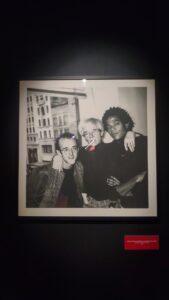
THE EXHIBITION AND THE MUSIC
The exhibition, organised by Next Exhibition and curated by Edoardo Falcioni, will run until 18 June and focuses on the relationship of the three artists with the musical and cultural environment, really underground, of New York in the early 1980s.
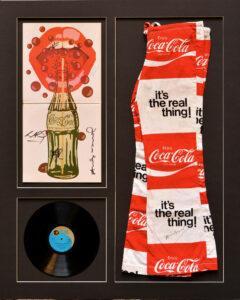
Warhol and Music: The Velvet Underground and The Rolling Stones
It will have a significant focus on music – as the exhibition title also states. There will be the famous cover of the Velvet Underground’s disruptive first album, ‘The Velvet Underground & Nico’, from 1967, designed by Andy Warhol – the one with the banana in the foreground and the words ‘Peel slowly and see’: peeling the banana, another pink one underneath came out… It is undoubtedly the most famous music cover of all time and one of the most influential albums in contemporary music. There was no band name, yet everybody knew that the album was by the Velvet Underground even because the cover was by Warhol, their producer.
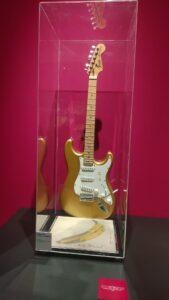
He designed other covers in addition to the one already mentioned; the one for the Rolling Stones ‘Sticky Fingers’ album will be on display, as well as several original Polaroids depicting important musicians of the time and their autographed guitars. What Warhol said about photography: ‘I carry my camera wherever I go. Having a new roll of film to develop gives me a good reason to wake up in the morning”. Three rare silkscreens made by Andy Warhol are also on T-Shirts, each depicting the faces of the three artists.
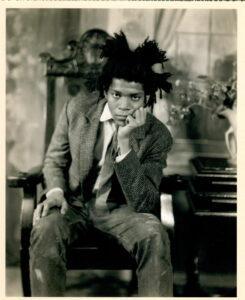
Jean-Michel Basquiat 1982 © James Van der Zee Archive
Basquiat and music: be bop
Basquiat designed the cover of a song, Beat Bop, a 1983 be-bop single by Rammellzee and K-Rob: one of the 500 scarce copies will be on display at the exhibition. Basquiat, on the other hand, loved jazz and its plastic experimentation. Haring also made musical covers, which you can also admire in Bologna.
NEW YORK IN THE EIGHTIES
Andy Warhol – born in 1928 – is considered the spiritual and artistic father of Jean-Michel Basquiat (born in 1960) and Keith Haring (born in 1958). The Atlantic town is where the bodies and projections of the Pittsburgh genius, the talented and fragile Creole and the committed artist from Reading move. Their existences mingle in the slums and the clubs of the East Side. The Velvet Underground still embodied, in the 1970s, the city’s restless spirit as new wave (Television, Suicide, to name two bands based in New York), but also, outside the genre, Linda Ronstadt and Billy Joel.
The excesses: drugs, extreme and desperate sex
The drugs flowing in rivers framed – and imprisoned – existences and ecstatic creations, particularly those of Basquiat. Sex bought, sold, yearned for, violently in the limelight, life taken to the extreme… Basquiat fell into these excesses and lost himself. Heroin magnetised him, while AIDS struck down Haring.
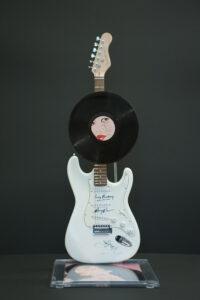
Graffitism and ferment
The graffitism of the two is a forerunner of much contemporary art; Banksy and TV Boy themselves would not have existed if across the pond Basquiat and Haring had not brought street art to worldwide prominence. Their mural painting politicised the streets and personalised places of passage and symbolic or anonymous buildings; those colours and sometimes protest writings claimed missing rights or gave voice and face to those who had none: originality and periphery, denunciation and visual declaration of beauty. At the turn of the seventies and eighties, the Big Apple experienced a dark and, at the same time, tumultuous period: there was a ferment, a tension towards creation, the experimentation of oneself and one’s bodies, of sharing practices, of limits taken beyond imagination. In this vibrant climate, young artists were coming and going in The Factory founded by Andy Warhol, as well as in clubs teeming with music and excess – I remember the famous Club 57 in the East Village, of which Keith Haring was artistic curator – and inhabited endless nights dangerously poised between extreme experiences and creative dissolution.
These were the years immediately following the Bronx’s climax of war and fires, the protests of 1975, and dramatic films like Taxi Driver. New York was still dirty, wild, and dangerous. And vital. The three artists lived in this place, and everything happening in New York in those years influenced their work.
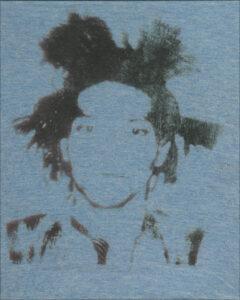
ANDY WARHOL
The genius
Multifaceted, unstoppable, volcanic, in a word, genius, Andy Warhol was a painter, sculptor, advertiser, performer, screenwriter, director and producer of artists. He will be the focus of the exhibition in Bologna. Andrew Warhola – this is his real name, a family of Slovakian origin – revolutionised the concept of the artist, who became his entrepreneur. He revolutionised the very idea of art and modernity.
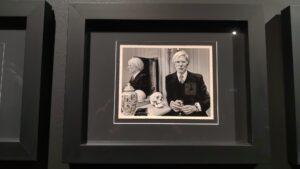
Pop Art and alternative culture
Arriving in New York from Pittsburgh, he started working with ‘Glamour’ magazine and, in 1962, used the concept of pop art: the presentation of paintings, then objects, dating back to mass consumption. Campbell tomatoes, then hamburgers, and Coca-Cola. are famous. Even celebrities such as Marilyn Monroe, Elizabeth Taylor, Mick Jagger and Mao Zedong fell into the humour & glamour territory of the new course inspired by the ever-present capitalism. His art studio ‘The Factory’, which opened in 1964, was also frequented by his close friend Lou Reed, who went on to describe some of the transgressive characters from the so-called ‘alternative culture’ (a bisexual actor, several transgender people) who went there in the well-known ‘Walk on the wild side’.
Fame, the good life, capitalism
Warhol’s love of money and fame, travel, and good life correspond to his art, which seems to remain lively neutrality, depicting the developments and excesses of the market economy and bringing the public (and hence the collective) into this system in which image and surface, colours, objects, transgression and consumption – in a word, aesthetics – predominate, and not reflection, introspection, sobriety, denunciation and commitment, research – in a word, ethics. And yet, Warhol revolutionised the concept of art, the aesthetics of music, and costume. He cleared customs of the difficulty of recognising oneself in the ever-changing world, full of messages linked to materiality and enjoyment. Therefore, he made us immerse ourselves consciously and lucidly with a critical spirit in capitalist consumerism.
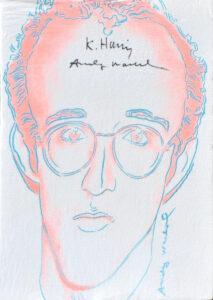
KEITH HARING
Social street art
A native of Pennsylvania, indulged by his father in his talent for drawing, he is considered, along with Basquiat, the founder of street art: a universal message for all walks of life. His goal was to draw for everyone. Influenced by Warhol’s Pop Art, he used very bright colours. His little dancing men are well known. He started drawing in the underground, in the streets. And he also drew symbols of the consumerism of the time: televisions, for example, and computers that were beginning to appear.
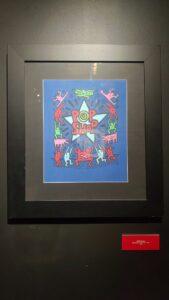
The Pop Shop
He consolidated his fortune in 1986 when he opened the Pop Shop in SoHo, where everyone could buy his works and merchandising, consisting of gadgets and t-shirts with his paintings. Already suffering from AIDS, he died at 32 in 1990. He had time, fortunately, to draw on the walls of major cities, including European ones, and wanted to leave his contribution of lively universalism on the Berlin Wall.
Art as a hymn to life
While his art is a reminder of the problems of the time (Aids, drugs, racism, social inequality, sexual discrimination), it is also a hymn to life, love, sex, music, happiness and sharing. Unlike other street artists, Haring also liked to share the moment of creation with people: in fact, he liked it when people stopped to observe him while he produced. It was an act of openness and trust, a genuine desire to make the process and the artistic product as collective as possible.
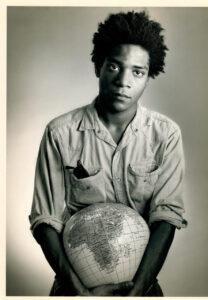
JEAN-MICHEL BASQUIAT
The only one of the three who was indigenous, although he was of Haitian origin on his father’s side and Puerto Rican on his mother’s, Basquiat became known at the age of less than twenty, thanks to his meeting with Warhol, whom he sought out vigorously and to whom he proposed himself with determination. Having run away from home at the age of 15 from a difficult situation – his mother had psychiatric problems: she was in and out of hospitals -, he slept wherever he could, prostituted himself for a living and, in the meantime, created graffiti in the 1970s with his friend Al Diaz – whom he met at art school. The two took the name SOMA and wrote critical phrases about society and politics on the city walls. Basquiat described his art as ‘Royalty, heroism, and the streets’.
Elegance and addiction
Almost uniquely black among whites, he stood out for his elegance and beauty, criticism of capitalism and contemporary hypocrisy, and excessive use of drugs, his companion since childhood. Drugs killed him at the age of 27, shortly after the death of his reference point, Andy Warhol, pain that probably led him to increase his use of heroin. Some have compared Basquiat’s work to neo-expressionism due to his use of anthropomorphic figures coloured in black, red and green.
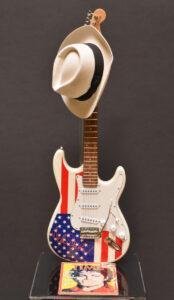
A UNIQUE OPPORTUNITY
The understanding of the complex contemporaneity of the 20th century certainly passes through visual art, and these three artists are its backbone and inseparable aesthetic and ethical fabric. For the first time, this exhibition brings them together, giving relevance to the liaison between painting, photography and music, two of the highest and most compelling expressions of art and the human soul. The exhibition of Basquiat, Haring and Warhol is a unique opportunity to see their interactions and rediscover the dogmas, crises, creations and revolutions of our time.
INFORMATION
The exhibition will open on 11 March 2023 and run until 18 June 2023.
Opening hours
- Wednesday-Friday, 10 a.m. – 6 p.m.
- Saturday, 10 a.m. – 7 p.m.
- Sunday, 10 a.m. – 6 p.m.
N.B. – The last admission is always one hour before closing time.
In the event of particular openings, times will be announced in good time on official channels:
FB /nextexhibition
IG next.exhibition
Closure
Weekly closing days: Monday and Tuesday
Tickets and prices
- Ticket: € 12.00 + presale fees
Tickets for the “Warhol Haring Basquiat” exhibition can be purchased at the Palazzo Belloni ticket office (on the days and during opening hours) and online, on the TicketOne website (for the moment, only the open ticket is available).
N.B. – Online bookings must be made 24 hours before the visit.
Palazzo Belloni
Palazzo Belloni – Via de’ Gombruti 13/a – 40123 Bologna
Contacts
Next Exhibition Srl
Corso Regina Margherita 371/10 – Torino
Telefono: +39 011 192 147 30
Palazzo Belloni
Email: info@warholharingbasquiat.it
Telefono: +39 051 199 078 66
Sito Internet

